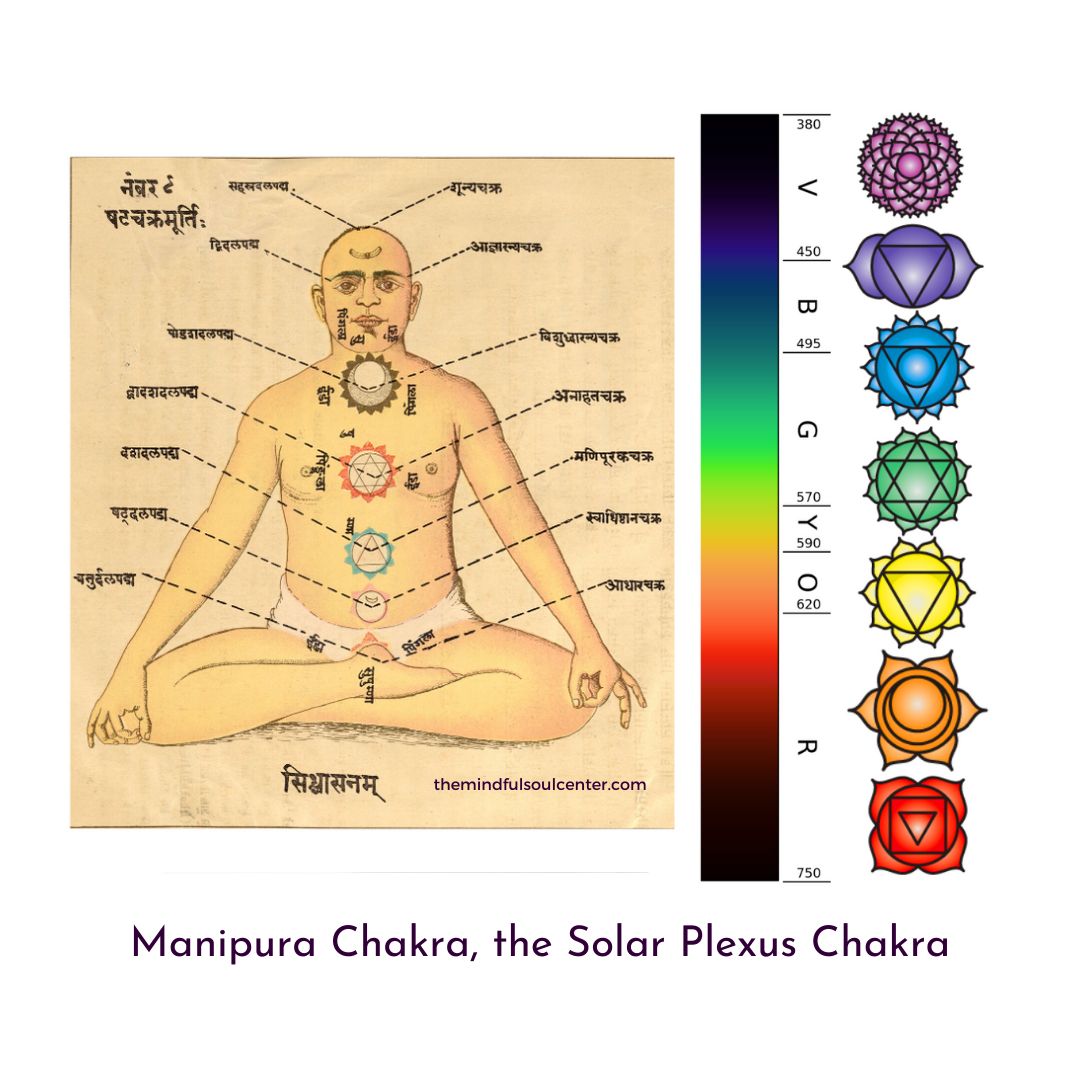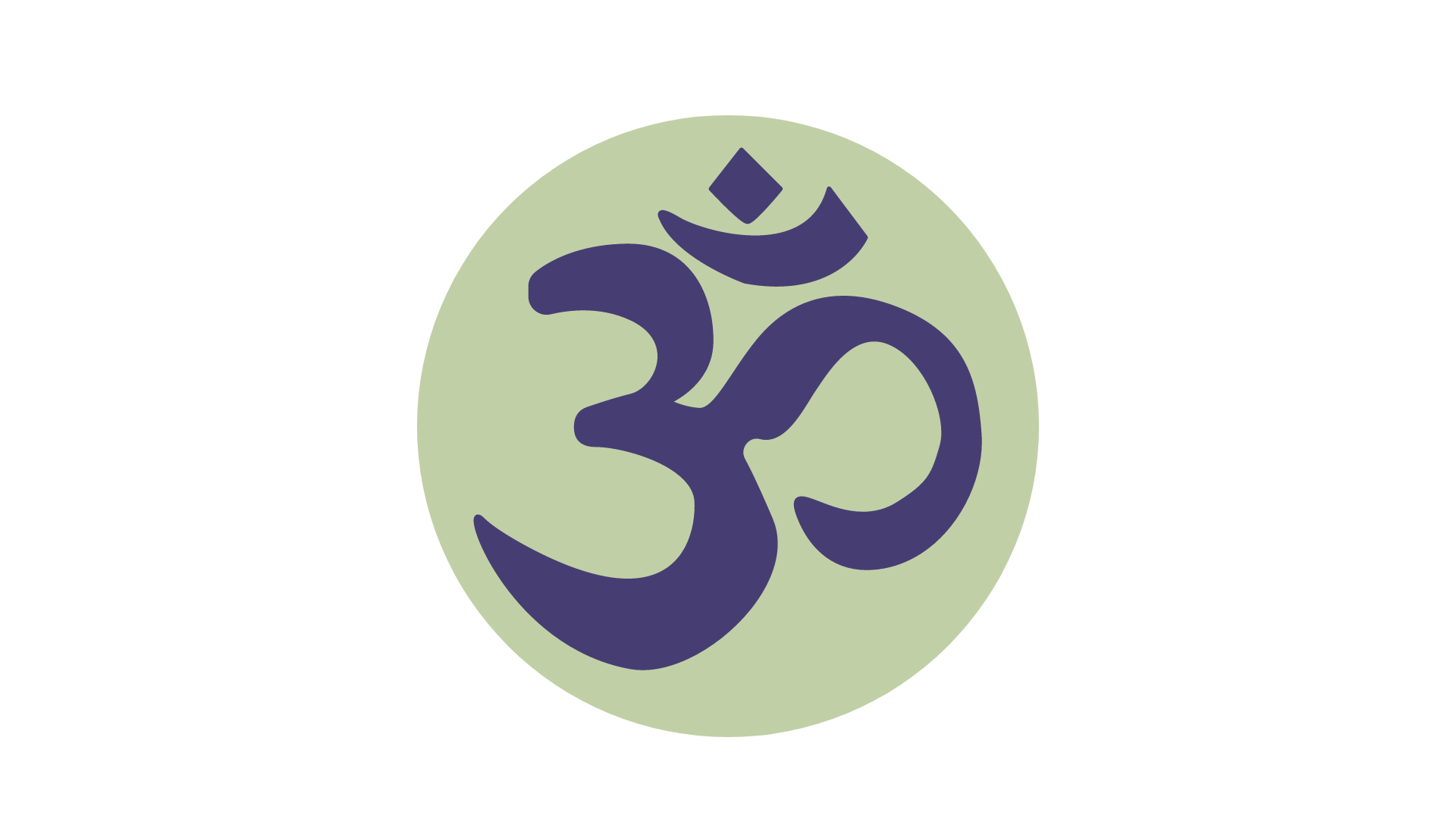
Today’s focus is on the Manipura chakra, one part of an energetic system. It is the third of seven primary chakras that align along the spine in ascending order, each with distinct characteristics.
where is it located?
This energetic wheel, known as the Manipura chakra or the Solar Plexus chakra, located above the navel, is sandwiched between the heart chakra and the sacral chakra. Even though chakras do correspond to our physical bodies, they are symbolic wheels of energy that allow us to visualize how the creative force of consciousness, our life force (prana), flows freely through our bodies. This invisible force extends approximately 30 cm or 12 inches away from the physical body in all directions.
assets and symbols
The two-dimensional symbol of the Manipura chakra is depicted as a lotus with ten petals and on each petal is a syllable or sound from the Sanskrit language: ḍaṁ, ḍhaṁ, ṇaṁ, taṁ, thaṁ, daṁ, dhaṁ, naṁ, paṁ, and phaṁ. To visualize the chakra in three dimensions, close your eyes as you imagine a lotus sitting upon the water with its petals facing upward and its roots reaching down into the mud.
In the centre of the chakra is a downward-facing triangle. The point of origin of the triangle faces downward, and the two points on the top represent growth in both consciousness and health, and within the triangle is the symbol for the seed sound or mantra known as Ram.
This is the power chakra. Its element is fire, with yellow as its associated colour (in modern definitions of chakras), and yellow links directly to the fiery energy and golden colour of the Sun (solar). In some traditions, the colours differ. For instance, blue is a colour associated with this chakra in classical tantra.
energy & vital winds
The energy of this chakra is associated with heat, friction, digestion, ripening, and supplies of energy. In the wheel of creation, fire destroys the old and is also the energy needed to bring ideas to fruition. So naturally, stones and crystals connected with the energy of the solar plexus chakra are yellow or golden in colour; they include citrine, carnelian, yellow topaz, amber and yellow sapphire, tiger’s eye and yellow jasper.
Home of Agni, the god of fire, this chakra is the seat of the vital wind called Samana Vayu. Vayus are a function of prana carrying signals to the nervous system. The Samana Vayu carries signals or the wind to stoke the digestive fires mixing what we have ingested (food and drink), thus, governing digestion and metabolism.
Whilst the heart chakra unites our animal and spiritual natures, the Manipura chakra is where the Apana Vayu and the Prana Vayu meet in a balanced system. These two functions of energy regulate the inward & upward and downward & outward flow of energy from the body.
The function of Prana Vayu (vital air) relates to life-giving energy, vitality, respiration, circulation and the intake of energy (inhalation/absorption). Whilst the function of Apana Vayu relates to excretion, urination, menstruation and the downward flow of energy (exhalation/excretion).
a city of jewels
The Manipura chakra is referred to as a City of Jewels. In anatomy and physiology, this abode of gems is a complex bundle of nerves and ganglia in our abdominal area known as the celiac plexus. Located at this intersection in our bodies, this grouping of complex networks is part of the sympathetic nervous system and, like our Sun, radiate outwardly. The solar plexus is the region around the celiac plexus.
When the Manipura chakra is in balance, we stand confident. We can process our emotions and express our personality. We can access our own sources of power and energy. Feelings of worthiness and clarity enable us to move forward with more ease resulting in meeting challenges and reliability. Gut feelings are felt and come from here.
The solar plexus is the point when hit hard, that can knock the wind out of us (literally in the physical realm). In the emotional and mental realm, a ‘hit’ can trigger feelings of shame. A lack of confidence can emanate from here.
When this chakra is blocked, we can experience the following symptoms: shame, frustration, powerlessness, low self-esteem, eating disorders, digestive problems, perfectionism, not doing the things we desire because of fear, etc.
Practising specific yoga poses (asanas), gestures (mudras), sounds (mantras) and affirmations will help to maintain, balance and unblock the affected chakra.
affirmations

I accept myself completely. I am confident. I am worthy. I am enough. I am responsible for my choices and my life. I am at peace and harmony with everthing around me.
mudras & mantras

yoga asanas aka postures

Manipura or Solar Plexus Chakra Sound Bath Meditation
Terms
Vayus
Vayus – there are five Vayus or winds with the Prana Vayu as the source of the four other Vayus. Vayus are functions of prana.
- Prana Vayu
- Apana Vayu
- Udana Vayu
- Samana Vayu
- Vyana Vayu
FIRE represented by Vahni
There are many different traditions, here instead of Agni, we look at Vahni (वह्नि)which means the fire is the fourth of eight great mothers that are associated with the Manipura chakra. She is part of a divine circle of great mothers.
Each mother divides herself into eight secondary matras or mothers but, in this case, instead of being an element, they are emotional states or those things that block the path to knowledge. The qualities of each matra may refer to the fire of the saṃsāra. With the fire of samsara as the cause of the continuous cycle of redeath and rebirth.
- Thirst or Tṛṣṇā
- Impassioned or Rāgavatī
- Delusion or Mohā
- Desire or Kāmā
- Anger or Kopā
- Highly Ignorant or Tamotkaṭā
- Envy or Īrṣā
- Sorrowful or Śokavatī
Vahni is also known as Agni, the god of fire. The medicinal plant Plumbago zeylanica is also called Vahni. Apropos since it is used as a treatment to reduce fever.
Prana
Prana is the creative force (Adi Shakti) of consciousness (Shiva)

